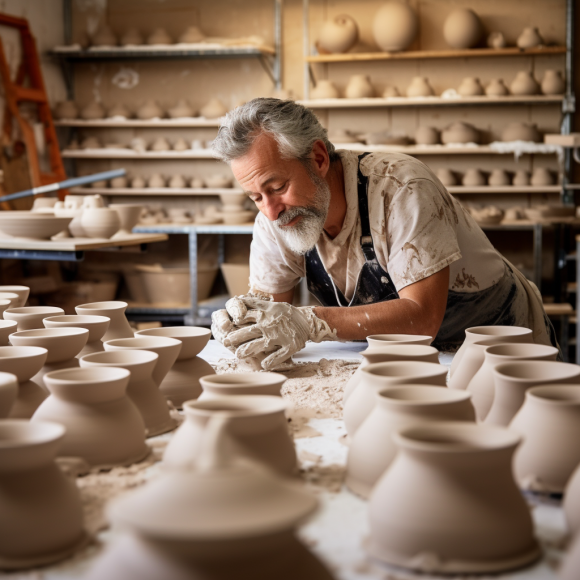S
ustainability is a growing concern in today’s world, and the field of ceramics is no exception. In this blog post, we will explore the concept of sustainable ceramics, focusing on eco-friendly practices that promote environmental responsibility and minimize the impact of ceramic production on the planet.
- Responsible Material Sourcing: Sustainable ceramics start with responsible material sourcing. Ceramic artists and manufacturers can opt for locally sourced clay and other raw materials, reducing the carbon footprint associated with transportation. Additionally, considering the environmental impact of clay extraction and ensuring ethical practices, such as land restoration and minimizing habitat disruption, contribute to sustainable material sourcing.
- Recycling and Waste Reduction: Efficient waste management is crucial in sustainable ceramics. Artists and manufacturers can implement recycling programs for clay scraps, reclaiming and reusing materials whenever possible. Additionally, minimizing packaging waste and exploring alternative packaging materials, such as biodegradable or recyclable options, further reduces the environmental impact of ceramic production.
- Energy Efficiency in Kiln Firing: Kiln firing is a significant energy-intensive process in ceramics. Adopting energy-efficient kilns and optimizing firing schedules can significantly reduce energy consumption and carbon emissions. Exploring alternative fuel sources, such as biomass or solar power, also promotes sustainable energy practices in ceramic production.
- Water Conservation: Water is an essential resource in ceramics, particularly for clay preparation, glaze mixing, and cleaning. Implementing water conservation practices, such as efficient water recycling systems and using recycled or rainwater for non-potable purposes, helps minimize water consumption and reduces the strain on local water sources.
- Non-Toxic Glazes and Materials: Traditional ceramic glazes often contain harmful substances such as lead and other heavy metals. Adopting non-toxic glaze formulations and using eco-friendly materials, such as low-fire or non-toxic alternatives, promotes the health and safety of artists, manufacturers, and the environment. Utilizing natural and sustainable colorants, such as plant-based dyes or mineral pigments, further supports eco-friendly ceramic production.
- Eco-Conscious Studio Practices: Creating a sustainable ceramics studio involves implementing eco-conscious practices. This can include using energy-efficient lighting, properly managing ventilation and air quality, and promoting recycling and composting within the studio space. Embracing sustainable studio practices extends the commitment to environmental responsibility beyond the production process.
- Collaboration and Education: Promoting sustainability in ceramics requires collaboration and education within the ceramic community. Artists, manufacturers, and educators can share knowledge, resources, and best practices for sustainable ceramic production. By raising awareness and fostering a collective commitment to eco-friendly practices, the ceramic industry can continue to evolve towards a more sustainable future.
- Consumer Awareness and Conscious Consumption: As consumers, we play a crucial role in supporting sustainable ceramics. By choosing to purchase ceramics from artists and manufacturers committed to sustainable practices, we can incentivize the adoption of eco-friendly production methods. Additionally, valuing quality craftsmanship and investing in durable ceramic pieces that stand the test of time promotes conscious consumption and reduces waste.
Conclusion: Sustainable ceramics prioritize environmental responsibility and promote eco-friendly practices throughout the production process. By adopting responsible material sourcing, implementing recycling and waste reduction initiatives, optimizing kiln firing processes, conserving water, using non-toxic glazes and materials, and embracing eco-conscious studio practices, the ceramic industry can minimize its ecological footprint. Through collaboration, education, and consumer awareness, sustainable ceramics can become the norm, preserving the beauty and artistry of ceramics while protecting our planet for future generations.



